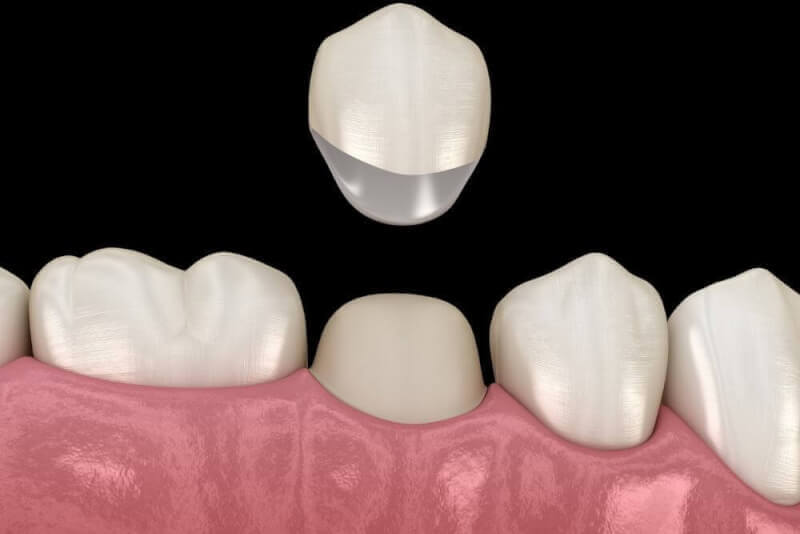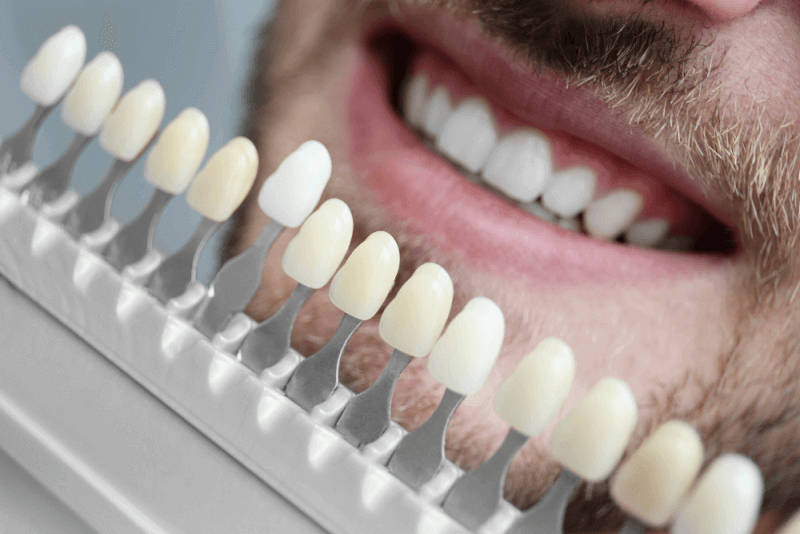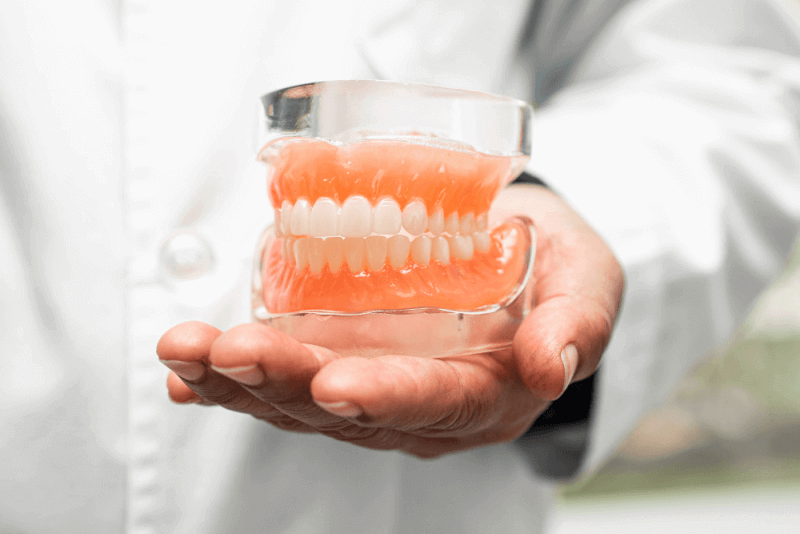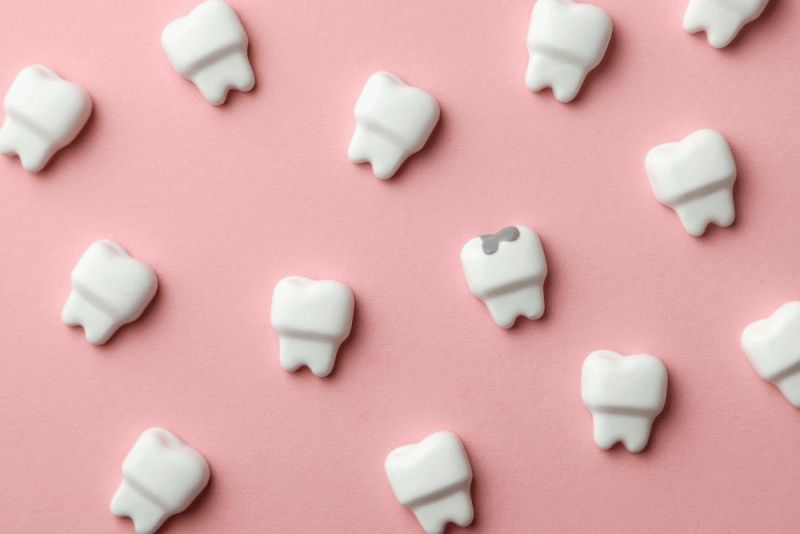What is porcelain tooth?
Porcelain veneers, a type of dental prosthesis obtained from porcelain, are used to cover the patients' own tooth surfaces. Since they are specially designed for patients, they are in one-to-one harmony with the patient's own tooth and jaw structure.
Porcelain dental veneers, which are applied for the loss of function of the teeth and for aesthetic purposes, are preferred by more and more patients every day. Due to the similarity of the light transmittance with the tooth structure, the closest image to nature is obtained.
Porcelain veneers are used in the treatment of many different problems, from missing teeth treatment to crowded teeth treatment. In this way, patients are enabled to fulfill their speech and chewing functions comfortably.
How is porcelain tooth made?
Porcelain dental treatment is a multi-stage process. It therefore takes approximately 1 week to complete the treatment. Before starting porcelain dental treatment, problems such as decay in the teeth to be treated are eliminated.
Then, depending on the characteristics of the porcelain tooth to be applied to the patient, the teeth are abraded. During the abrasion process, the tooth enamel is abraded in the range of 0.5 or 0.7 mm. This etching process is extremely simple and painless. Therefore, there is no need for anesthesia.
After the etching process is completed, the mold removal process is applied. The molding process can be applied in two different ways. The first of these methods is taking molds of the teeth with traditional methods. The other method is to obtain tooth molds in 3D with CEREC technology. After the patient's tooth molds are taken, porcelain dental veneers are sent to laboratories specialized in the field of porcelain dental veneers to produce porcelain teeth special for patients.
The installation of permanent porcelain teeth varies depending on the laboratory. On average, it can be completed in 1 week. However, in some cases this can take up to 2 weeks. During this time, temporary veneers are fitted to prevent damage to the teeth whose enamel has been eroded.
The last stage of porcelain dental treatment is the installation of permanent porcelain dentures. Porcelain teeth are bonded to the patient's own teeth using a special adhesive. Afterwards, small corrections can be made to fully adapt to the patient's oral structure. After these corrections are finished, porcelain teeth are permanently bonded.
Things to consider after porcelain dental veneers
The recovery process of patients after porcelain dental veneer treatment is not challenging. Some patients do not receive local anesthesia. These patients can resume their daily lives. The pain felt by patients after treatment is almost negligible. In addition, there are some points that patients should pay attention to after treatment.
- Patients should not consume very hot or cold foods for 1 week after treatment.
- Hard and hard foods that are difficult to chew should be avoided.
- Oral and dental hygiene should be taken care of.
- Acidic drinks should be avoided.
Why is porcelain tooth made?
Porcelain used in dentistry is not only used in dental veneers but also in orthodontic braces and connection apparatus. In order for the porcelain obtained from the mixture of kaolin, quartz and feldspar materials to have the desired properties, the elements must be fired at 900 to 1300 degrees Celsius.
The kaolin used in the production of porcelain teeth allows the dough to be kneaded easily and at the same time provides the porcelain color. The quartz used in the composition provides glassy phase formation. In addition, it provides chemical and heat resistance. Feldspar helps to dissolve the quartz material.
Porcelain tooth material types
Porcelain teeth are divided into subgroups depending on the support materials. These support parts are needed to support porcelain veneers and increase their durability.
Porcelain dental veneers fused to metal alloy
This type of porcelain tooth, which uses metals used in dentistry as support, is not a suitable option for patients with metal allergies.
Porcelain dental veneers fused to titanium alloy
Titanium, one of the most commonly used metals in dentistry, is also used in porcelain dental veneers. However, it is not a very preferred method in porcelain dental veneers.
Porcelain dental veneers fused to gold alloy
Gold alloy porcelain dental veneers, which can be preferred by allergic bodies, are not a highly preferred option due to their high costs. The gold element used in this coating is mixed with elements such as tin, copper, platinum and palladium.
Porcelain teeth without metal
These porcelain dental veneers, which stand out with their translucent properties, are also the most preferred option. The generally preferred types are full ceramic and zirconium types.
The difference between porcelain teeth and zirconium veneers
Porcelain and zirconium dental veneers differ from each other in terms of aesthetic appearance and functionality. Zirconium veneers offer an image closer to the appearance of real teeth. The biggest reason for this is that zirconium is more easily and effectively processed, while porcelain is more difficult to process. For this reason, they give a flat appearance.
In addition, zirconium veneers are more durable than porcelain teeth and are closer to the chewing strength of the teeth. For this reason, it can be used longer than porcelain teeth and the chewing function is much more comfortable.
Types of porcelain teeth
In the preparation of porcelain teeth, combinations of metal or non-metal elements are used. For this reason, it diversifies within itself.
Porcelain dental veneers with metal substructure
Metal is used as a support in porcelain tooth veneers with metal substructure. Various metals used in dentistry are also used as support in porcelain dental veneers. This type of porcelain teeth is not suitable for patients who are allergic to metals such as nickel.
In the application of porcelain teeth with metal substructure, metal substructures are first prepared and their compatibility with the teeth of the patients is checked. If the metal infrastructure is fully compatible, porcelain veneers are overlaid. At this stage, the eligibility test is carried out again. If there is a situation such as teeth collision in any area, it is corrected by filing and finally polished.
Full ceramic empress dental crown
Full ceramic empress dental veneers, which are highly suitable for single tooth veneers, are especially applied to the front teeth. The support structures of full ceramic empress dental veneers are also made of compressed porcelain. For this reason, it is less durable than other porcelain veneers. Because of these features, it is not preferred to be applied to the back teeth.
Porcelain tooth crown with zirconium substructure
Zirconium-based porcelain veneers, which provide the closest appearance to natural teeth, do not cause any recession in the gums. It is especially preferred by patients who attach importance to aesthetic appearance.
Porcelain laminate veneer dental crown
Porcelain laminate veneers are also called leaf porcelain. The most important feature that distinguishes this veneer from others is that it is applied only on the front surface of the teeth. Porcelain laminate veneers, which provide a perfect tooth appearance, do not require cutting the teeth. However, in order for them to adhere securely, the front surfaces of the teeth must be roughened.
Who are porcelain dental veneers applied to?
Porcelain dental veneers are a method used in both smile aesthetics and dental health problems. The most common applications of porcelain dental veneers are as follows.
- Tooth loss
- Aesthetic problems
- Tooth decays that are too large to be covered with a filling
- Crooked tooth disorders
- Tooth fractures
Advantages of porcelain dental veneers
Porcelain dental veneers provide many advantages over many other treatment options. These advantages include the following:
- Excellent resistance to light impacts.
- It comfortably fulfills dental functions such as biting and chewing.
- Low cost.
- It meets the expectations of patients in terms of aesthetics.
- The treatment process is short.







